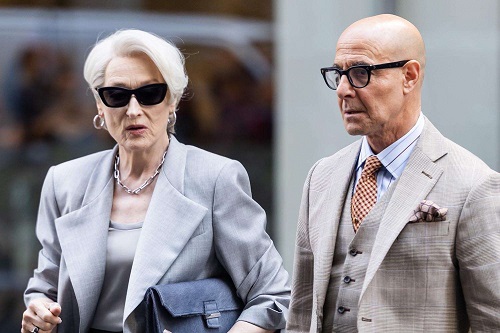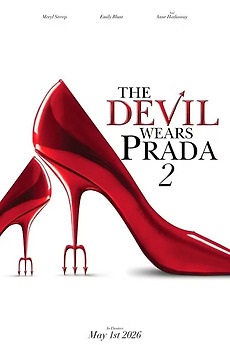Italian Fashion, Hollywood’s Latest Obsession
TORONTO – When The Devil Wears Prada was released in 2006, it very quickly became a cultural phenomenon, glamourizing the fashion world akin to Audrey Hepburn’s Funny Face in 1957. The New York to Paris trajectory was used in both films. But now, The Devil Wears Prada 2 is ditching the Paris catwalk for a passeggiata in Milano’s Brera district, taking its crew to Prada’s home city – Milano.
Italy’s fashion capital, also known as one of the “big four” fashion week destinations, is the new stage for Miranda Priestly’s comeback in the heavily anticipated Prada sequel. Producers are also seeking 2000 extras in Milano for the shoot, men and women over 30 who [preferably] already work in the fashion, design, communications and events industry.
This is the second major [fashion/design focused] production this year, the first being Emily in Paris, that has migrated its budget (of circa $150m) from France to Italy, bringing hundreds of jobs to the peninsula along with exposure to major Hollywood players.
More importantly, from the Italian perspective, it will help to further popularize its fashion houses and brands.
An important point, given that early box office prognostications hover between $600M to $1B worldwide for the sequel. The 2006 original – The Devil Wears Prada – is as popular with female audiences as Sex And The City was during its six year run on HBO.
But with the amplification power of social media, its sequel could potentially swing some impressionable fashionistas from France’s “haute couture” to Italian craft and design.
At the moment, Italy’s annual apparel market is estimated to be worth around €40 billion, second only to France’s €150 billion – supported massively by exports.
But while French companies like Louis Vuitton, Hermes and Chanel dominate the luxury market, recent years have seen a slowdown in demand for their expensive, extravagant brands. In addition, Italian luxury stocks and consumer confidence have seen an uptick, according to recent financial reports.
Remembering of course that the film’s “Devil” wears Prada and not Louboutin, the marketing impact of this female-centric film franchise could potentially swing significant consumer dollars back towards a “Made In Italy” culture.
Milan’s “ready to wear” fashion sprouted in the 1970s, through practical and sophisticated clothing created by influential Designers like Armani and Versace. Today, it’s Miuccia’s female-led Prada.
A key point, since The Devil Wears Prada is often referred to as a “career bible” for women, because of its portrayal of powerful and ambitious female figures. But it was targeted to females in an era that preceded smartphone proliferation and the reach of social media. Milanese and Italian fashion brands may just be on the brink of a surge in sales – come Meryl Streep’s return to Italy’s fashion hub.
In the pic: Meryl Streep and Stanley Tucci
Massimo Volpe is a filmmaker and freelance writer from Toronto: he writes reviews of Italian films/content on Netflix






